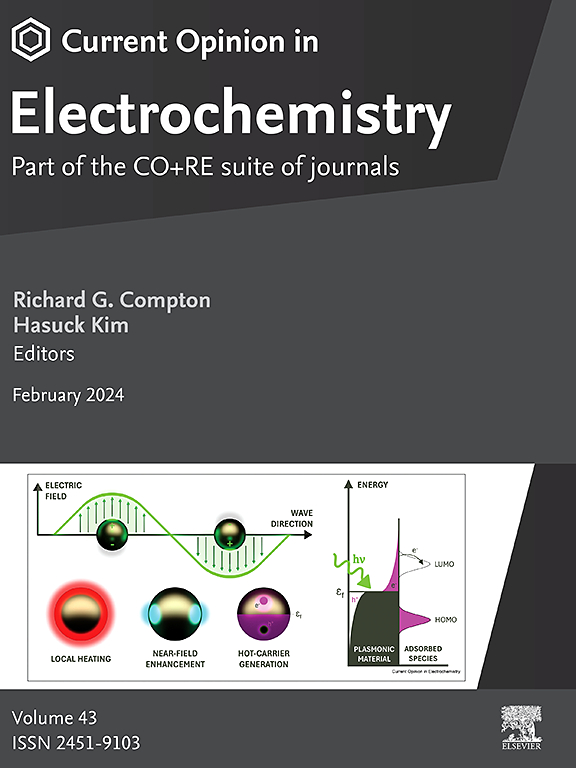Advances in CO2 reduction on bulk and two-dimensional electrocatalysts: From first principles to experimental outcomes
IF 6.9
2区 化学
Q1 CHEMISTRY, PHYSICAL
引用次数: 0
Abstract
Designing catalyst materials for the electrochemical carbon dioxide reduction reaction (CO2RR) requires an understanding of the underlying thermodynamics and kinetics. In this review, we discuss the characteristics of two-dimensional (2D) and bulk materials, which distinguish their catalytic properties. We map catalyst performance in the faradaic efficiency–applied potential space for various hydrocarbons and oxygenates on these catalyst classes. We explain different approaches for modeling catalytic CO2RR, such as the computational hydrogen electrode, grand canonical (GC) potential kinetics, and GC density functional theory, with the lattermost accurately capturing potential-dependent kinetics. We review recent attempts made to break scaling relationships between intermediate adsorption energies and describe unique features found in 2D materials. Finally, we compare kinetics on both material classes using microkinetic modeling. We conclude that future studies should focus on realistic simulations of the electrode–electrolyte interface and combining the favorable properties of 2D and bulk materials to engineer high-performance CO2RR catalysts.
体积和二维电催化剂上CO2还原的进展:从第一原理到实验结果
设计用于电化学二氧化碳还原反应(CO2RR)的催化剂材料需要了解潜在的热力学和动力学。本文主要讨论了二维材料和块状材料的催化特性,从而区分了它们的催化性能。我们在这些催化剂类别上绘制了各种碳氢化合物和含氧化合物的法拉第效率应用潜力空间的催化剂性能图。我们解释了模拟催化CO2RR的不同方法,如计算氢电极、大规范(GC)势动力学和GC密度泛函理论,后者最准确地捕获了势依赖动力学。我们回顾了最近的尝试打破中间吸附能之间的尺度关系,并描述了在二维材料中发现的独特特征。最后,我们用微动力学模型比较了两种材料的动力学。我们认为,未来的研究应侧重于对电极-电解质界面的真实模拟,并结合二维材料和大块材料的有利性质来设计高性能的CO2RR催化剂。
本文章由计算机程序翻译,如有差异,请以英文原文为准。
求助全文
约1分钟内获得全文
求助全文
来源期刊

Current Opinion in Electrochemistry
Chemistry-Analytical Chemistry
CiteScore
14.00
自引率
5.90%
发文量
272
审稿时长
73 days
期刊介绍:
The development of the Current Opinion journals stemmed from the acknowledgment of the growing challenge for specialists to stay abreast of the expanding volume of information within their field. In Current Opinion in Electrochemistry, they help the reader by providing in a systematic manner:
1.The views of experts on current advances in electrochemistry in a clear and readable form.
2.Evaluations of the most interesting papers, annotated by experts, from the great wealth of original publications.
In the realm of electrochemistry, the subject is divided into 12 themed sections, with each section undergoing an annual review cycle:
• Bioelectrochemistry • Electrocatalysis • Electrochemical Materials and Engineering • Energy Storage: Batteries and Supercapacitors • Energy Transformation • Environmental Electrochemistry • Fundamental & Theoretical Electrochemistry • Innovative Methods in Electrochemistry • Organic & Molecular Electrochemistry • Physical & Nano-Electrochemistry • Sensors & Bio-sensors •
 求助内容:
求助内容: 应助结果提醒方式:
应助结果提醒方式:


